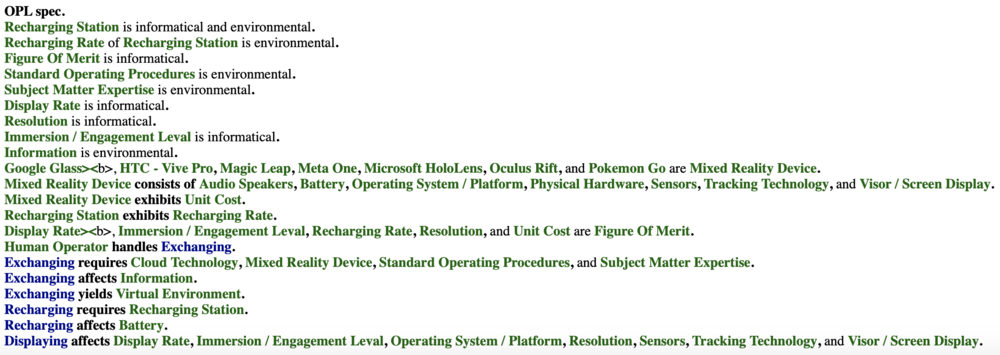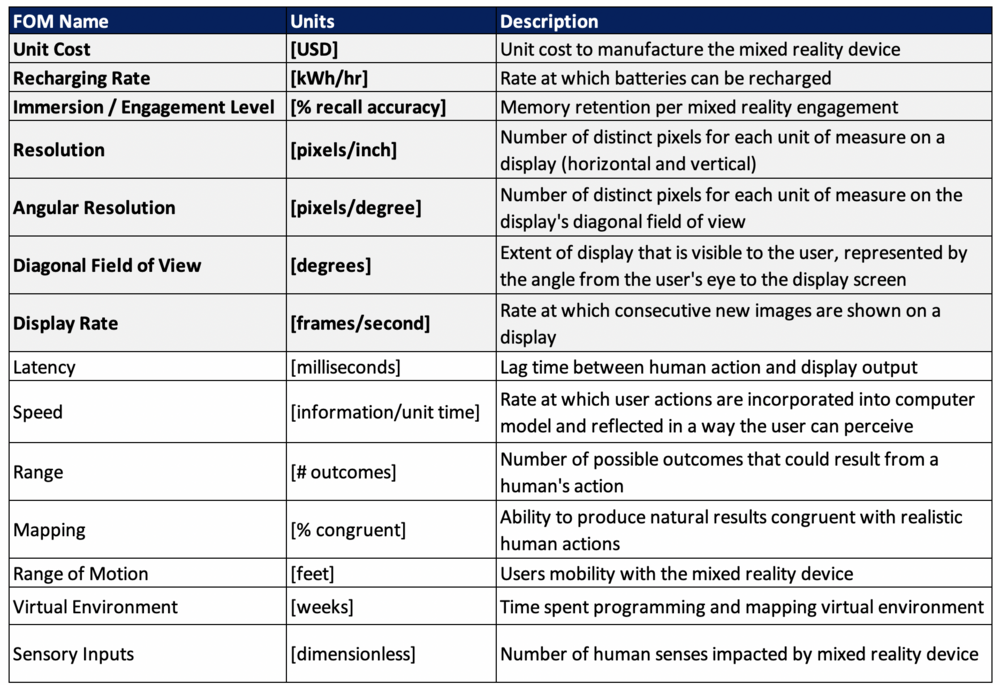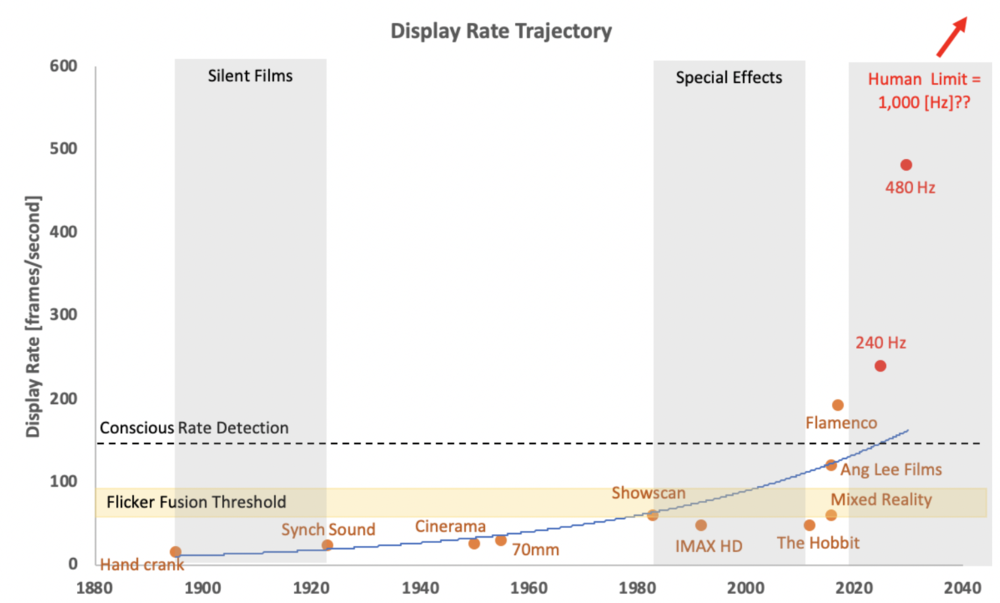Difference between revisions of "Augmented, Virtual, and Mixed Reality"
| Line 34: | Line 34: | ||
==Figures of Merit (FOM) Definition== | ==Figures of Merit (FOM) Definition== | ||
The table below shows a list of FOMs by which mixed reality devices can be assessed. The first four (shown in bold) were included on the OPD; the others will follow as this technology roadmap is developed. Several of these are similar to the FOMs that are used to compare traditional motion pictures, modern gaming consoles, and other technologies that aim to exchange information. | |||
It's worth noting that several of the FOMs are requisites to the mixed reality Immersion / Engagement Level, one of the primary FOMs. In this way, these can be thought of as a FOM chain. Latency and Mapping, for example, contribute greatly to the overall memory retention per use of the mixed reality device. This is true for many of the FOMs listed below. | |||
[[File:FOMTable.png|1000px]] | [[File:FOMTable.png|1000px]] | ||
Revision as of 03:05, 6 October 2019
Roadmap Overview
Augmented, virtual, and mixed realities reside on a continuum and blur the line between the actual world and the artificial world - both of which are currently perceived through human senses.
Augmented reality devices enable digital elements to be added to a live representation of the real world. This could be as simple as adding virtual images onto the camera screen of a smartphone (as recently popularized by mobile applications Pokemon Go, Snapchat, et al). Virtual reality, which lies at the other end of the spectrum, seeks to create a completely virtual and immersive environment for the user. Whereas augmented reality incorporates digital elements onto a live model of the real world, virtual reality seeks to exclude the real world altogether and transport the user to a new realm through complete telepresence.
Mixed reality, on the other hand, incorporates both of these ideas to create a hybrid experience where the user can interact with both the real and virtual world. Mixed reality devices can take many forms. For the purposes of this technology roadmap we've elected to narrow our focus to wearable headgear (heads up) devices. These devices are typically fashioned with visual displays and tracking technology that allow six degrees of freedom (forward/backward, up/down, left/right, pitch, yaw, roll) and immersive experiences. The elements of form for an example mixed reality product, the Microsoft HoloLens (1st generation), are depicted in the figures below.
Figure 1 - Mixed Reality Example (Microsoft Hololens)
Figure 2 - Microsoft HoloLens Hardware Components
In terms of functional taxonomy, this technology is primarily intended to exchange information. The design of these devices today allow for information to be exchanged through two of the five human perceptual systems: (1) visual system & (2) auditory system. The combination of hardware, software, and informational/environmental inputs allow mixed reality users to interact and anchor virtual objects to the real world environment.
Design Structure Matrix (DSM) Allocation
Roadmap Model using Object-Process-Methodology (OPM)
We provide an Object-Process-Diagram (OPD) of the augmented, virtual, and mixed reality roadmap in Figure 3 below. This diagram captures the main object of the roadmap, mixed reality device, its various instances including main competitors, its decomposition into subsystems (hardware, battery, operating system, etc), its characterization by Figures of Merit (FOMs) as well as the main processes (Exchanging, Recharging, and Displaying).
Figure 3 - Mixed Reality OPD
An Object-Process-Language (OPL) description of the roadmap scope is auto-generated and given below. It reflects the same content as the previous figure, but in a formal natural language.
Figure 4 - Mixed Reality OPL
Figures of Merit (FOM) Definition
The table below shows a list of FOMs by which mixed reality devices can be assessed. The first four (shown in bold) were included on the OPD; the others will follow as this technology roadmap is developed. Several of these are similar to the FOMs that are used to compare traditional motion pictures, modern gaming consoles, and other technologies that aim to exchange information.
It's worth noting that several of the FOMs are requisites to the mixed reality Immersion / Engagement Level, one of the primary FOMs. In this way, these can be thought of as a FOM chain. Latency and Mapping, for example, contribute greatly to the overall memory retention per use of the mixed reality device. This is true for many of the FOMs listed below.
Figure 5 - Mixed Reality Figures of Merit
Figure 6 - Display Rate Trajectory



